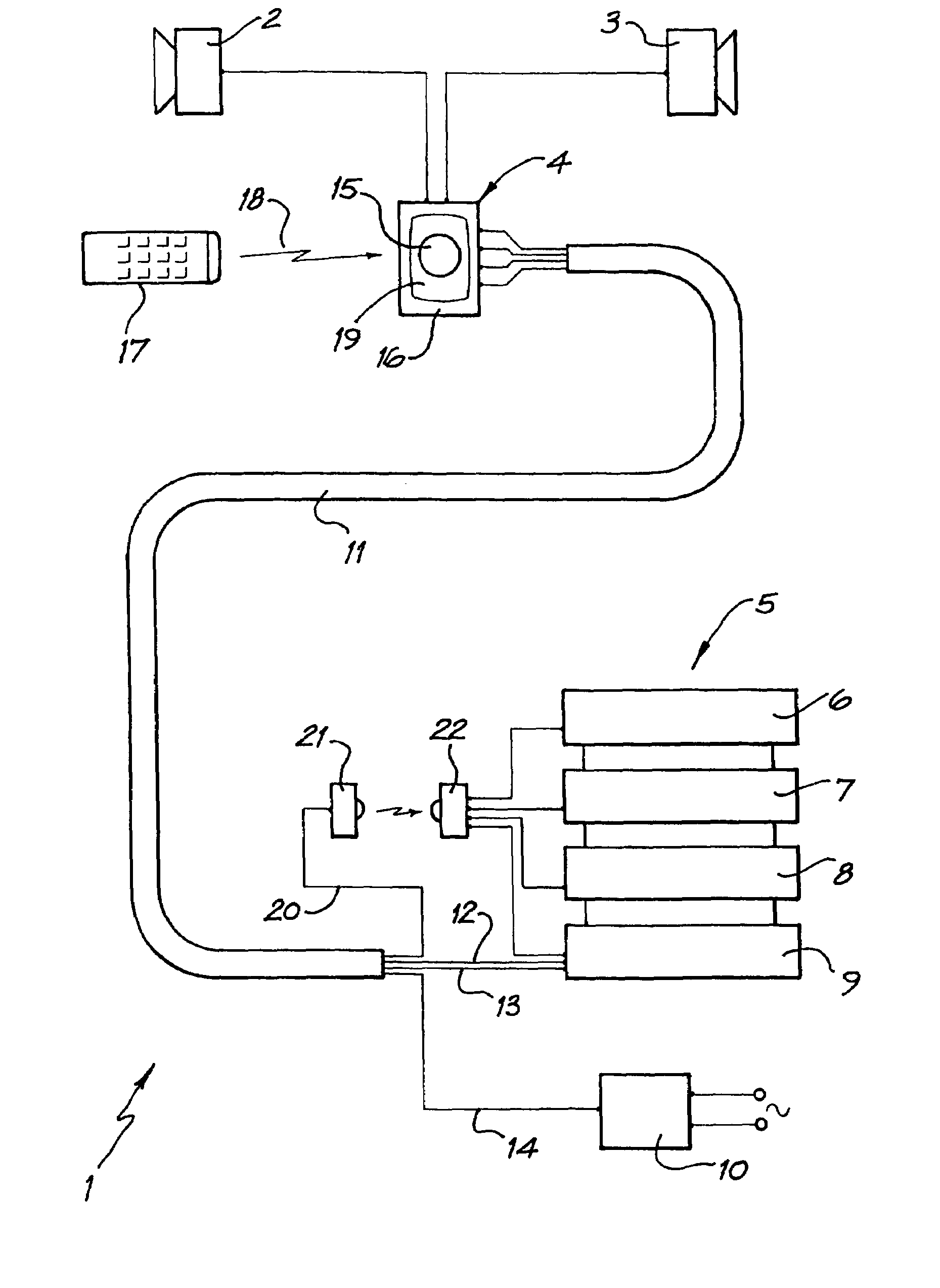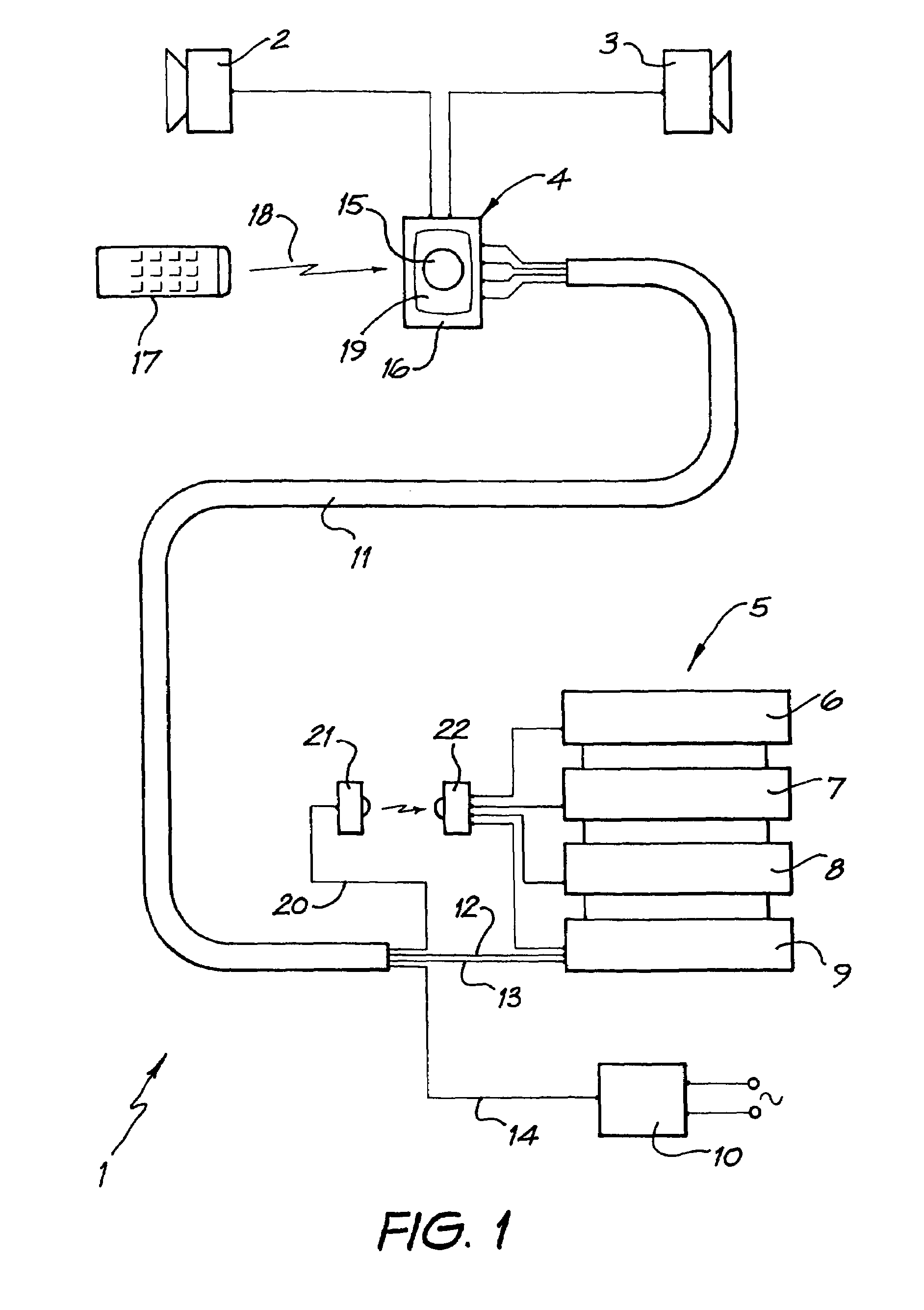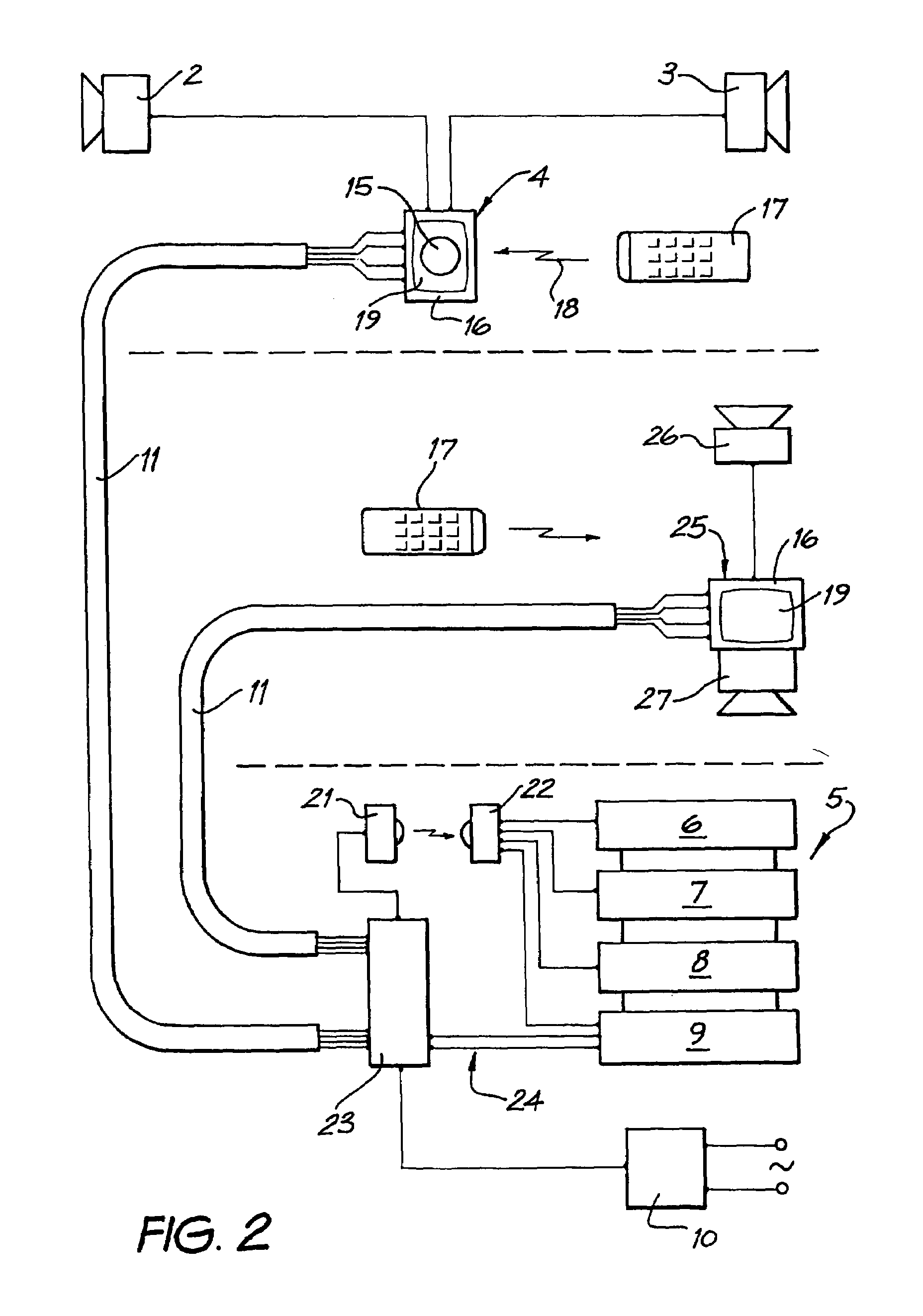Distributed stereo system
a stereo system and distribution system technology, applied in the direction of stereophonic circuit arrangement, loudspeaker spatial/constructional arrangement, transmission, etc., can solve the problems of attenuator not increasing the output of amplifier, attenuator can only reduce the volume below the level, etc., to reduce speaker cable loss, increase the total system damping factor, and decentralise amplification
- Summary
- Abstract
- Description
- Claims
- Application Information
AI Technical Summary
Benefits of technology
Problems solved by technology
Method used
Image
Examples
Embodiment Construction
[0025]Referring first to FIG. 1, the distributed stereo audio system 1 comprises two speakers 2 and 3 connected to an amplifier 4. The amplifier 4 is housed in a standard electrical light switch housing in the same room as the speakers.
[0026]In another room, a source of audio signals 5 comprises a CD player 6, a tape recorder 7, a VCR 8 and a source selector 9. A power supply 10 provides power from the mains to each amplifier 4.
[0027]The amplifier 4 is connected to the signal source—and power supply 10 by means of a category 5 four pair twisted cable 11. One of the twisted pairs 12 provides the right audio signal from the source to amplifier 4. Another twisted pair 13 provides the left audio signal. A third twisted pair 14 provides power from power supply 10 to the amplifier 4.
[0028]In use amplifier 4 amplifies the left and right standard line level signals and supplies them to the speakers 2 and 3 respectively. The amplifier is controlled by operation of a potentiometer 15 mounted ...
PUM
 Login to View More
Login to View More Abstract
Description
Claims
Application Information
 Login to View More
Login to View More - R&D
- Intellectual Property
- Life Sciences
- Materials
- Tech Scout
- Unparalleled Data Quality
- Higher Quality Content
- 60% Fewer Hallucinations
Browse by: Latest US Patents, China's latest patents, Technical Efficacy Thesaurus, Application Domain, Technology Topic, Popular Technical Reports.
© 2025 PatSnap. All rights reserved.Legal|Privacy policy|Modern Slavery Act Transparency Statement|Sitemap|About US| Contact US: help@patsnap.com



